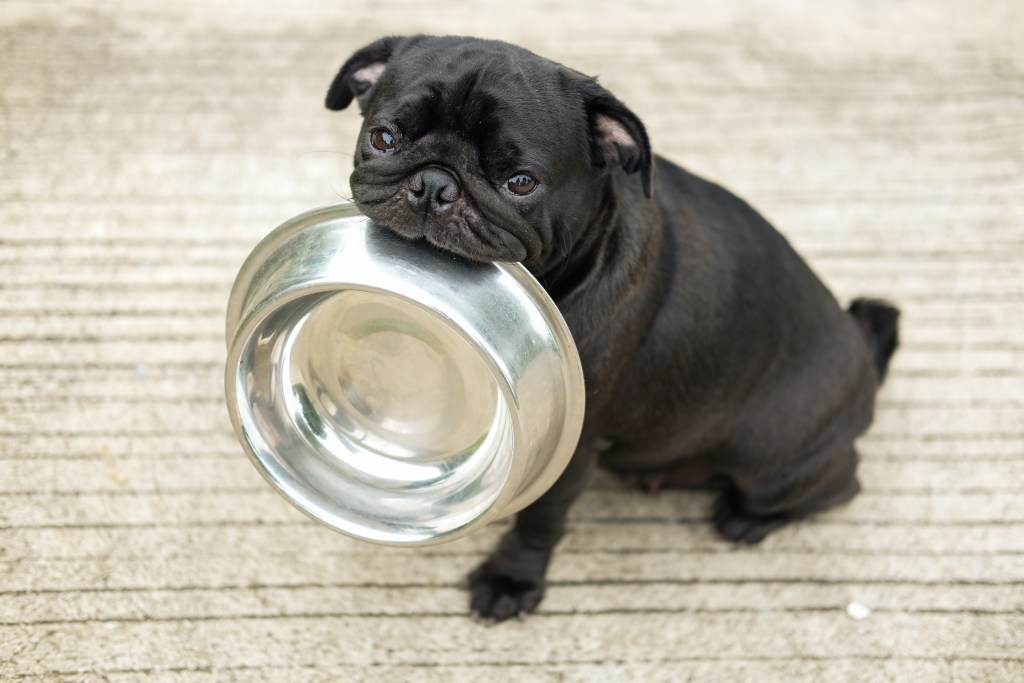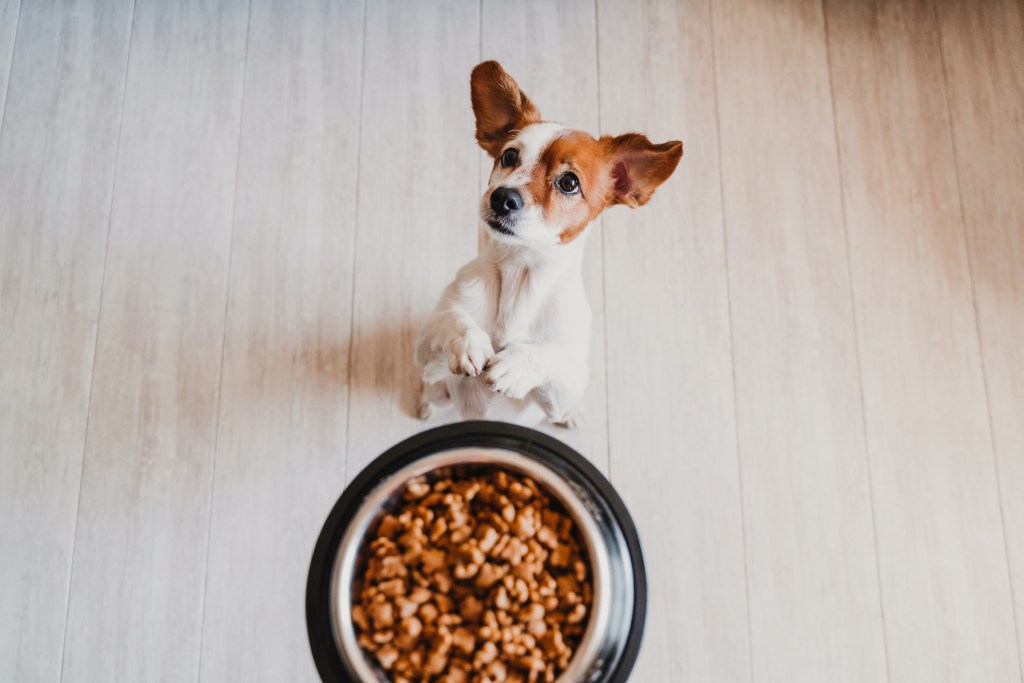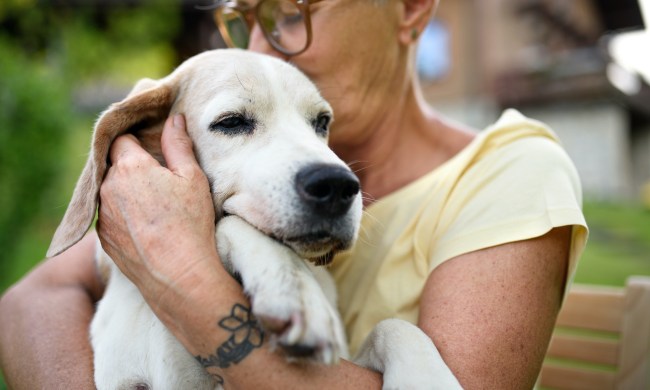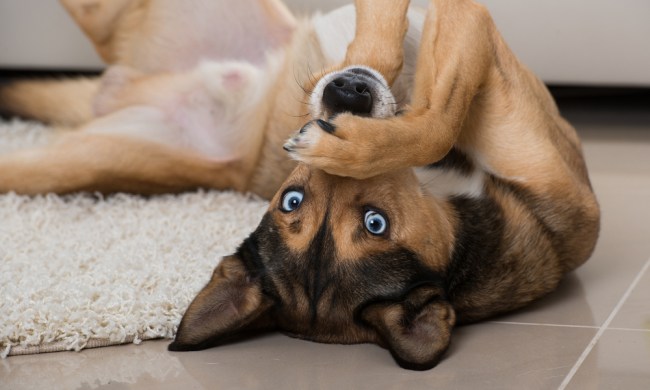Puppyhood has its perks, but it doesn’t last forever. As your dog grows, you’ll have many transitions to look forward to, from his emotional maturity (after his teenage craziness, of course) to his new adult size.
It’s not always clear, though, when your puppy becomes an adult dog. Transitions don’t happen overnight, but there will come a day when it’s time to switch to an adult dog food to match. If you’re wondering when to stop feeding puppy food, this is the article for you. We’ll touch on when different sizes of dogs can switch to adult food, what to look for in high-quality dog food, and how to help your pup make the transition. Read on, pup parents!

When to switch to adult dog food
Did you know that dogs age at different rates depending on their size? According to the pet nutrition pros at Purina, dogs reach maturity between the ages of 9 and 24 months, which is a huge difference:
- Small and toy breeds, who weigh 20 pounds or less as an adult, are done growing by their first birthday, though others are grown by the time they reach nine months.
- Medium-sized dogs, weighing between 20 and 50 pounds at full maturity, are considered adults at one year old.
- For larger dogs, one year isn’t quite enough to grow to full size. In fact, many giant breeds are still growing past two years of age! Because of this, switching your large-breed dog to adult food around the ages of 18 and 24 months is ideal.
Although these guidelines are helpful, it’s smart to take into account your dog’s breed and weight before switching to adult dog food. Dogs need more calories and nutrition as they grow, which is why puppy food is packed with high-density nutrients. When your dog stops growing and begins gaining weight, it’s definitely time to switch to a more balanced, adult diet. When in doubt, you can always ask your vet for guidance on transitioning from puppy food to adult food.
How to help your pup transition to adult dog food
Just as with any big change, a gradual transition might make it easier for your pup to adjust. Once you determine that it’s the right time, all you need is your dog’s puppy food, your new adult dog food, and a little extra patience, just in case. Most dogs don’t have an issue switching to their new food, but some TLC never hurts.
Give yourself about 10 days to make this adjustment since you’ll be going little by little. Begin by swapping out just a bit of the old food for a bit of the new — about a 10th to a sixth of their entire meal. Remember to remove as much of the food as you add, or else you risk overfeeding your pup! He may not mind it, but his health certainly will.
By the time you’ve reached a week, the new food should make up the majority of your dog’s meal. If your dog has any stomach upset or issues with bowel movements, it’s okay to take the transition even slower for a while. Keep up this slow transition until you’re feeding your dog only his new food — and don’t forget to give him lots of praise!

What to look for in adult dog food
To keep your dog healthy throughout his adult life, look for food with high-quality, nutritionally complete ingredients. According to the American Kennel Club, “A good dog food will contain meat, vegetables, grains, and fruits. The best dog foods contain high-quality versions of these ingredients that are appropriate for your dog’s digestive system.”
Whether you feed your dog dry kibble or wet canned food, read the label carefully. Small differences in wording such as “beef” versus “with beef” or “beef-flavored” are more significant than you might think. If a product name claims the food is “beef,” for example, it must contain at least 70% beef (via AKC). “With beef,” on the other hand, requires only 3% of the food to be real beef.
If you’re still puzzled, always look for these words on the package: “[Product name] is formulated to meet the nutritional levels established by the AAFCO Dog Food Nutrient Profiles,” according to AKC. The Association of American Feed Control Officials, or AAFCO, provides ultra-important regulation on the manufacturing quality of animal food around the nation.
Remember that a dog’s nutritional needs will vary depending on its size, breed, and activity levels, so you may need to consult your vet for the most trustworthy recommendations.
Transitioning your dog from puppy food to an adult diet can be more complicated than you may think. It takes some time to have everything prepared, let alone to make the change itself, but with some patience and love, your dog will have it down in no time. With the knowledge you now have, you can help make this process even easier for your pup, though what’s not to love about getting food?



